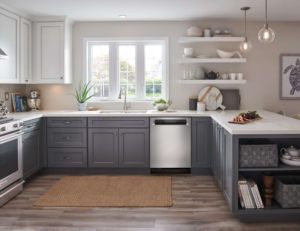SEO is an ongoing marketing discipline that helps brands connect with consumers searching for their products or services. It is a valuable investment that can boost visibility, clicks, and traffic and deliver strong business results.
To get started, learn more about the fundamentals of SEO with this top industry blog. It offers breaking news, proven tips, and additional “what is SEO” insights. Click the https://www.rankboss.com/ to learn more.

Keywords are the terms that search engines use to find and display relevant results on a search engine result page (SERP). They are the foundation of any SEO strategy, allowing small businesses to understand how people find their products or services. They also serve as the basis for content optimization and provide insight into users’ intentions.
For this reason, it is important to know the keywords your audience uses to search for the information they need. This way, you can create content that matches their needs and will be found by those who are searching for it. A well-rounded keyword research strategy will help you to determine both short-tail and long-tail keywords that are relevant to your business.
Long-tail keywords are typically more specific than short-tail keywords. They request more precise information from search engines, such as “Alaskan dog breeds” or “inexpensive dog walkers Seattle.” These keywords tend to have less competition and can be used to drive targeted traffic to your website.
Aside from identifying which keywords to target, keyword research can also reveal potential opportunities in your market. It can also uncover existing content that you can improve or create new content around. In addition, it can be used to monitor competitors and identify opportunities to improve your positioning on the SERP.
Once you have a list of keywords that you want to target, it is important to incorporate them into your website and other marketing materials. This will increase your visibility and organic traffic, and will lead to more conversions and revenue.
The best place to start is by identifying the most popular search terms in your niche. You can do this by using a variety of tools, including Google Search Console, Moz Keyword Explorer and Wordstream’s Keyword Explorer. Once you have a list of keywords, you can begin to optimize your website by adding them in the title, headers and body of each page. Remember to spread them out, however, so that they are naturally incorporated into the text and don’t look forced.
Keywords are also important for building trust with your audience. When you can relate your content to their search terms, it shows that you are aware of what they’re looking for and are willing to answer their questions. This will build trust with your visitors and potential customers, which is critical for converting them into buyers.
Content
Content is one of the most important aspects of SEO. Without relevant, high-quality content, your website will not rank well in search engine results pages (SERPs). People perform 3.5 billion searches on Google every day, which means there are many opportunities for businesses to get found and attract new customers. To optimize your content for SEO, you must understand what search engines are looking for in terms of relevance and depth. This includes understanding your target audience’s needs and interests, as well as the keywords they use when searching.
What Is Content?
The term “content” is used to refer to any information that can be accessed through a digital device. This information can be text, audio, video, images, or other types of media. Creating useful content for your website is the main goal of most digital marketing strategies. This information can be used to inform customers about a product or service, and may encourage them to take action.
When it comes to SEO, content is the most important element. This is because SEO is all about delivering quality content that is relevant to the keywords that are being targeted. In addition, content must be optimised for mobile devices and follow other best practices to improve its chances of ranking highly in SERPs.
Using industry digital marketing tools to research keywords is essential when producing content for SEO purposes. These tools can help identify the most popular keywords and their average search volume. This can give you a good idea of what people are searching for in relation to your business and how competitive the keywords are.
It is also important to include keywords in the title and URL of your page. This will help Googlebot understand the topic of your content, and will make it easier for users to find. It is also helpful to add synonyms and related words in your content, as this will provide more context for Googlebot.
Another important aspect of content is its credibility and authority. This can be achieved by using authoritative sources and ensuring that your content is accurate. This will increase your site’s trustworthiness, which will in turn improve its search engine rankings.
Link building
Link building is a key component of seo and involves getting other websites to link to your website. This helps search engines see that your site is popular and useful. It also helps to build trust and authority with the search engines, which can lead to increased traffic and revenue for your business. There are a variety of ways to build links, including guest blogging, content creation, and social media promotion. However, the best way to build links is to create quality content that people will want to share and link to.
It’s important to understand the difference between internal and external links. Internal links are links that point to pages on your website. External links are links that point to other websites. Both types of links are essential for search engine optimization, but they carry different weights. For example, a link from a New York Times article has more value than a link from a personal blog. A high-quality link is a major factor in SEO, so you should always focus on acquiring the best possible links.
There are many ways to get links, but some methods are more effective than others. For example, email outreach is one of the most effective ways to build links. It involves contacting the owners of other sites and convincing them to link to your content. Using tools like Semrush to find prospects is another great way to reach out to potential linkers.
Getting links from high-quality sources is important for your SEO efforts. These links will help you rank higher in search results and generate more organic traffic. However, it takes time to acquire these links. However, the effort will pay off in the long run. A link from a high-quality site is more likely to result in a click-through, which can increase your organic traffic and sales.
In addition to creating high-quality content, it’s important to promote your content on social media and in other places where your audience hangs out online. This can be done through paid ads or through other marketing tactics, but it’s important to make sure that your content is high-quality and unique.
Analytics
SEO analytics is the process of measuring, analyzing, and reporting on the results of your search engine optimization efforts. It provides a clear picture of what’s working, what’s not, and where you should focus your efforts. It also helps you to prioritize tasks and make rational decisions. Without SEO analytics, you’re left to guess whether your current optimization efforts are working or not. This can lead to a lot of wasted time and money.
To get started with SEO analytics, you’ll need to set up your Google Analytics account and Google Search Console (GSC). GA provides in-depth analytics on what happens on your website, including user behavior and index coverage. GSC, on the other hand, focuses on SEO-related data such as organic search queries and clicks. It can also provide details about your site structure and navigation, including which pages have the highest exit rates (typically signifying that they don’t deliver on what users are expecting).
Using an advanced rank tracker will allow you to see where your clients’ competitors rank for their keywords. Using this information, you can identify new opportunities and improve your own ranking. This will help you to gain a competitive advantage and attract more traffic to your client’s websites.
Another important aspect of SEO analytics is identifying and improving the quality of your website’s content. This can be done by analyzing the average session duration and the number of pages visited per session. By analyzing this data, you can learn what keeps your prospects engaged and use that knowledge to improve the content on your site. For example, you might notice that your visitors stay longer on pages with videos, and try to incorporate more videos into your future pages.
Lastly, SEO analytics can also help you make informed decisions about your budget and goals. It can be difficult to make decisions about your budget without knowing the performance of your campaigns. With SEO analytics, you can save time and money by making informed decisions about how much to invest in your campaigns. In addition, you can also avoid wasting money by not investing in campaigns that don’t work.




